We had to travel as far as Kafr Bir’im to find hope, faith and creative joy in these sad and desperate times of a terrible attack on Gaza. We spent an entire day with the Bir’im returnees to understand the significance of their unique action. The last time we visited this community of internally displaced villagers was exactly one year ago, in their traditional summer camp, organized in order to educate the younger generation never to give up on their right to return to Bir’im. There were scores of children, youth and adults there, singing and dancing in the open court between the village church and the remains of what used to be the village school, until its inhabitants were expelled by Israel in the Nakba. We were thus privileged to celebrate the beginning of the villagers’ return in the summer of 2013, and more recently, to mark the first anniversary of that event.
Far from the sultry and depressed Tel Aviv, we found determined people hanging on to hope and home against all odds. Ever since they decided to return, there wasn’t a single night they did not spend in the village – sometimes in their dozens, sometimes less – holding various social activities and just plain living there. About a hundred community members alternate in staying and sleeping over in Bir’im. Travelling from Haifa and Acre, where many of the displaced now live, is not easy on a daily basis. During the summer, the community’s children spend the school vacation in the village. For them, it is an exhilarating experience to spend some time with their peers, away from their parents.
Northern Israel is relatively quiet these days, and the weather is pleasant, but the distance from the brutal Israeli attach on Gaza is repeatedly erased whenever troubling news updates reach us. “Thirty people were arrested in the antiwar demonstration in Haifa, including Saher Jeries from our village”, says my friend Nahida Zahra, one of the leading return activists, in a proud voice. Asil Abu-Warda shows me a picture of her arrest by an undercover policeman disguised as a Palestinian. “Is Asil also a girl’s name?” I ask and recall Asil ‘Asle murdered during the October 2000 incidents while sitting and watching a Palestinian demonstration near Arabe, inside sovereign Israel. Abu-Warda seems to read my mind and tells me that ‘Asle was her classmate. “My mother would always argue with his mother on who chose the name first. I was born two months before him, so clearly my mother was first”. She explains the meaning of the word to me: it is an adjective describing something bright and smooth “like the face of a horse in a famous ancient Arabic poem, like the edge of a sword”. Asil sleeps over in the village when duty calls: “Mirwat, who manages the roster here, called me the day before yesterday and told me she needed me here, so I came. I had hoped to spend some time studying here, but I didn’t get to it”.
Expatriate volunteers arriving from Bethlehem join us for lunch in the tree shade – the tasty menu includes mujaddara and vegetable salad. The dessert was a lesson for me – after a short round between the destroyed village houses, the kids return with a bag full of tiny purple-green fruits that look like plums. Indeed, this is a type of plum called Arasia. Nahida says the trees keep growing in the village, giving fruit every summer since 1948. Her husband Zozo gives instructions for the youngsters who will stay for the night.
“What next?” I ask the two of them, “Where do you want to take this return activity?” They told me they held a workshop with a professional facilitator and 30 village refugees, discussing that question exactly. It is now clear to them that the most urgent challenge is to recruit as many community members as activists. Not everyone takes part in actual return – some contribute to the struggle in other ways, such as art or research. They consider holding a conference in one year’s time, together with Bir’im refugees from all around the world. Their struggle has great potential, with tens of thousands of visitors coming to support them this year alone.
This potential is also evidenced by the legal steps taken against them by the Israel Land Authority in order to expel them from the village once again. The cemetery, church and adjacent kitchen are beyond dispute, but any other sign of laying claim to village property is immediately removed by the ILA. It also uses punitive measures and harassment tactics: its inspectors have blocked the road leading from the cemetery to the church, which had been previously used to transport equipment and drive the village elders to the center of Bir’im. In addition, the regional council which until now had approved the summer camp every year informed the returnees this year that the ILA refuses to permit it. The exhausting struggle has brought some of the villagers to the breaking point, but there are always others who don’t give up hope and push on with enthusiasm.
They keep close contact with the internally displaced villagers from Iqrit, which is Biri’m’s mirror image when it comes to the history of displacement. In 1948, the inhabitants of both were asked to evacuate, and ever since then have not been allowed to return. Both had obtained the High Court of Justice’s approval of their right to return, but this was subsequently denied by the IDF and later the Israeli government. The displaced persons of these two villages acted together for years to change this policy, claiming that they were not like all the other Palestinian refugees but rather displaced Israeli citizens, and that therefore the government had to allow them to return. It took over six decades for them to finally reach the conclusion that this strategy would achieve no concrete results and to decide to return without the state’s permission.
As evening approaches, the eight whose turn it is to sleep over remain. Before they turn in, more visitors came, villagers from the nearby Jish. Dinner is less sumptuous, but the atmosphere is still fabulous. The kids enliven the place, watching a popular Syrian TV series, some of them enjoying a sweet shisha. Twelve year-old Marianne takes the initiative and peels potatoes to make French fries. Seven year-old Ryan plays with everyone. I have already met the brothers Wassim and George Ghantus in Zochrot’s solidarity visits to the summer camp in previous years. Together with their sister Nagham they are the responsible adults; as twenty year-olds, they are the youth leaders.
I comment that their actions are reminiscent of actions taken by Israel and individual Israelis, in that it is not completely legal, and does not await government approval (and in the Jewish settlers’ case, also flaunts international law) to do what they believe is right. Nagham agrees verbally, but her body language conveys her discomfort with this comparison: “Indeed, it is similar in a way, but we have the moral law and justice on our side!” ‘Assaf, an intelligent and well-mannered boy, shows me how to edit videos shot in another destroyed village, Qadas, about 10 miles from Bir’im. He didn’t know that village and was surprised to find that its architecture is similar to his own. We enjoy tea seasoned with mint and za’atar grown in the garden near the church. In a recent court hearing, the ILA demanded that it be destroyed as well, but the judge refused.
My partner Eleonore and I got a private tent for the night. It’s cool and windy outside, but very cozy inside. The kids are noisy as usual, but when I ask them to tone it down Ryan says he’s sorry and keeps quiet. The only disturbance is Hezi the rooster, named after the chief ILA inspector acting against the Bir’im returnees. He crows insistently, but slowly this becomes a background noise for a sleep deeper and longer than in the last troubling nights. I woke up at five and went out to the darkness shrouded in thick fog that wets the air. I tried to take a picture, but there wasn’t enough light.
In the morning, George is already waiting for us with coffee and breakfast in the kitchen. He has recently returned from China, where he had learned the language. He shows me pictures from Shanghai where he is seen carrying an Arabic sign: “I have declared my return”. This is part of a worldwide campaign of Bir’im refugees. He then surprises us with a poignant statement so early in the day: for him, Biri’m is both a blessing and a curse. It’s the place of his hopes and dreams, of political action in the community and sweet grandfatherly memories. On the other hand, it is an ongoing curse that has been tormenting the internally displaced ever since 1948. While his mind wonders, somebody walks into the central courtyard and starts shooting incessantly. George becomes alert and tells me she is probably from the ILA. We walk out to her and say hello. She answers drily but continues shooting. Only after he insists to know who she is, she mutters “Dvora from the ILA”. Every few days they come here to document the villagers’ activities and demonstrate their resolve to kick out the returnees. The villagers’ uncompromising struggle against Israeli authorities bears out the truth of what Eleonor has kept telling them over and over again throughout our short stay: What you are doing is so important and impressive!
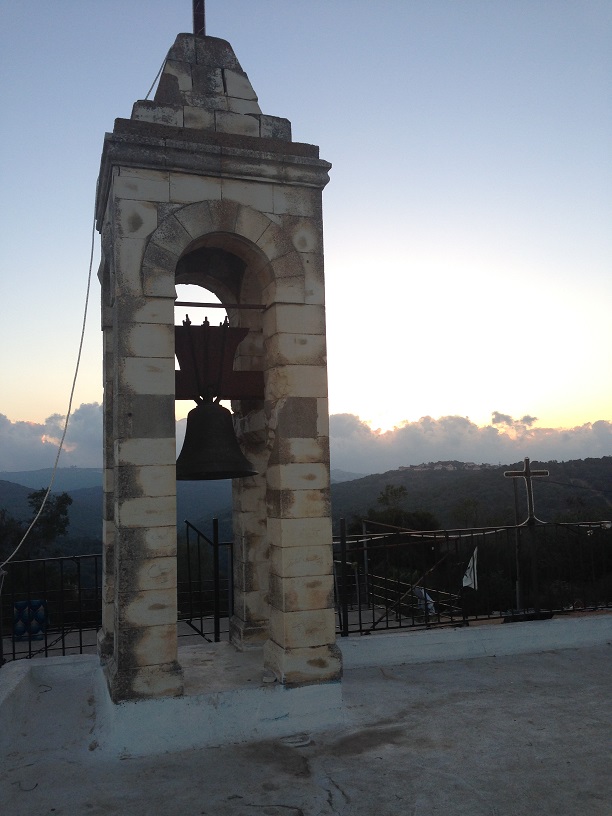
Kafr Bir'im \ כַּפְר בִּרְעִם \ كفر برعم
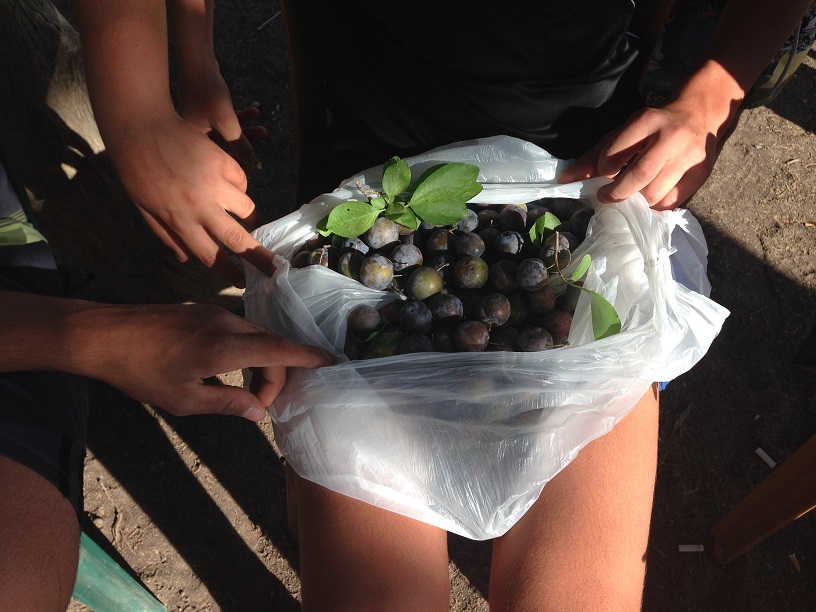
אוכלים ארסיה בבִּרְעִם / Eating Arasia at Bir'im
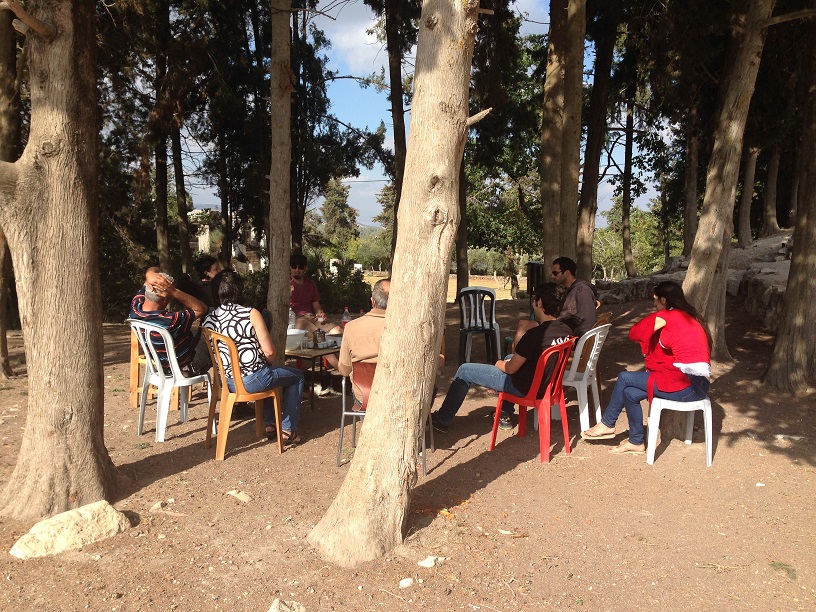
Kafr Bir'im \ כַּפְר בִּרְעִם \ كفر برعم
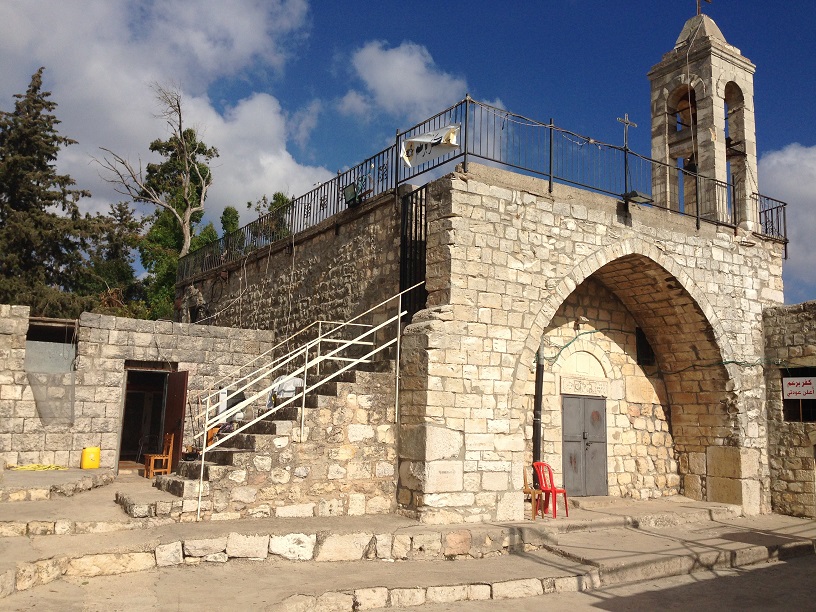
Kafr Bir'im \ כַּפְר בִּרְעִם \ كفر برعم
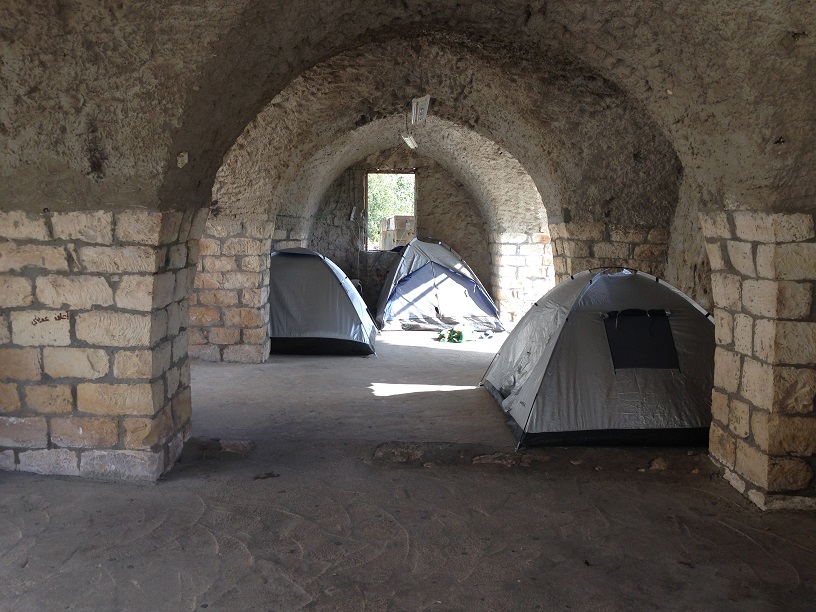
Kafr Bir'im \ כַּפְר בִּרְעִם \ كفر برعم
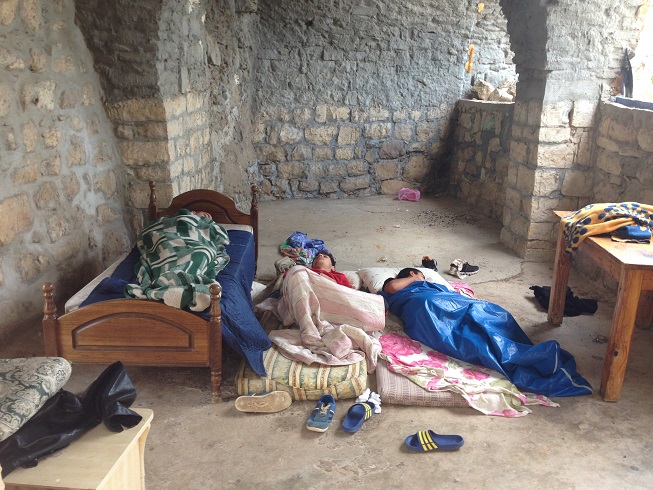
Kafr Bir'im \ כַּפְר בִּרְעִם \ كفر برعم
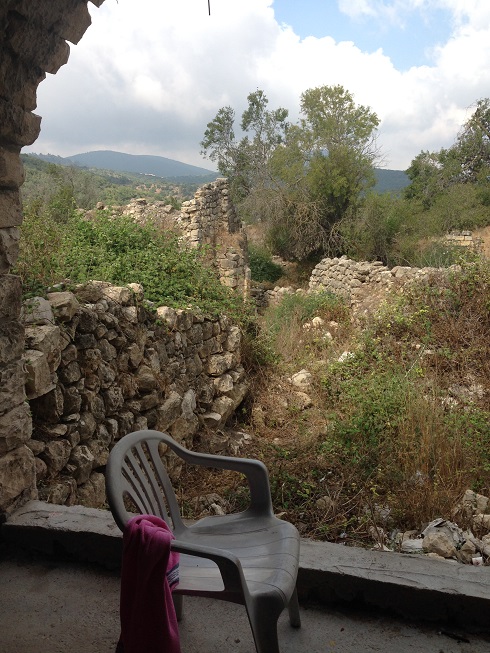
Kafr Bir'im \ כַּפְר בִּרְעִם \ كفر برعم
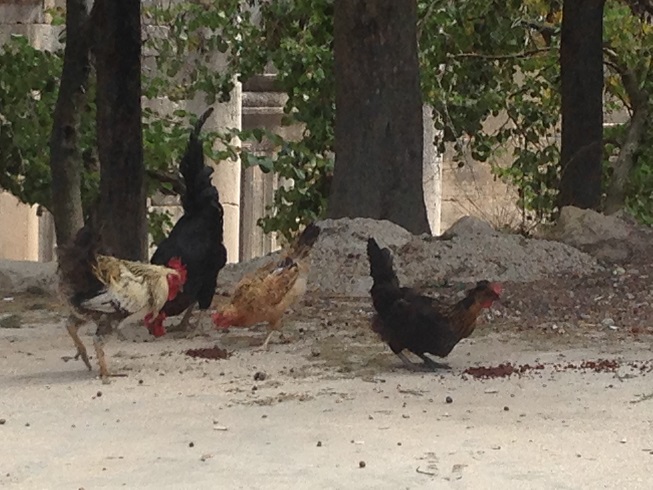
Kafr Bir'im \ כַּפְר בִּרְעִם \ كفر برعم
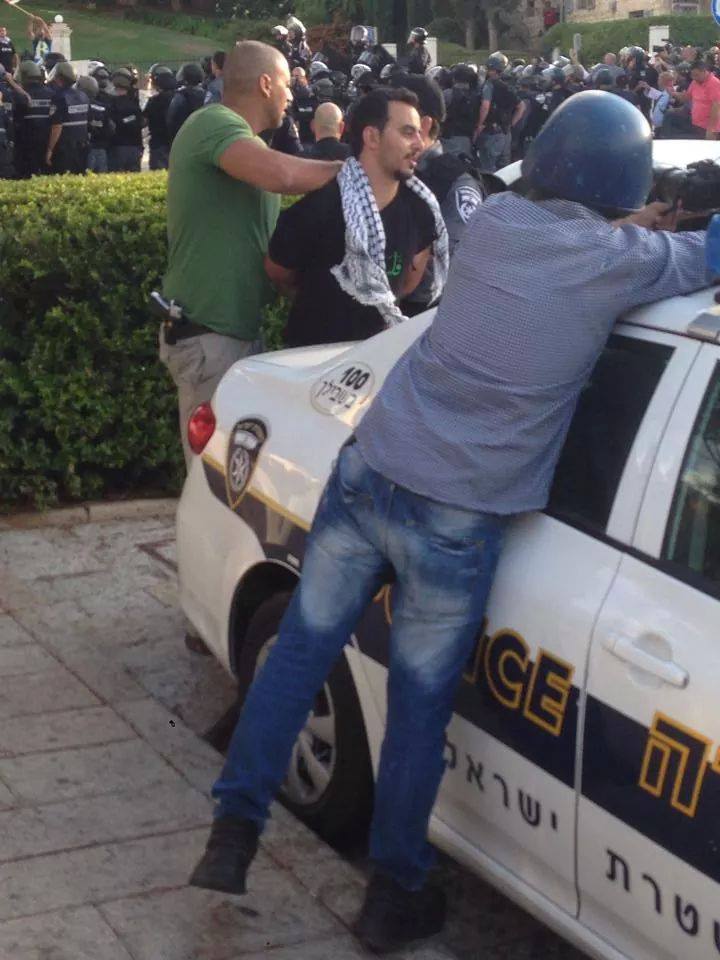
סאהר ג'רייס נעצר / Saher Jeries is arrested
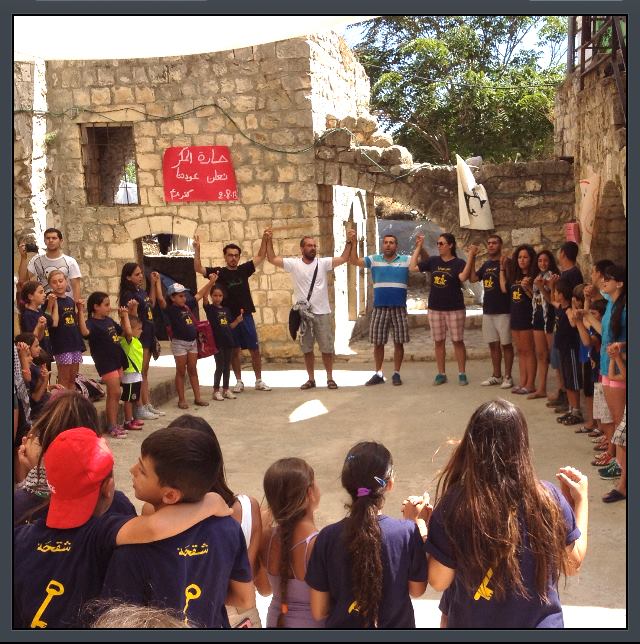
Kafr Bir'im \ כַּפְר בִּרְעִם \ كفر برعم



